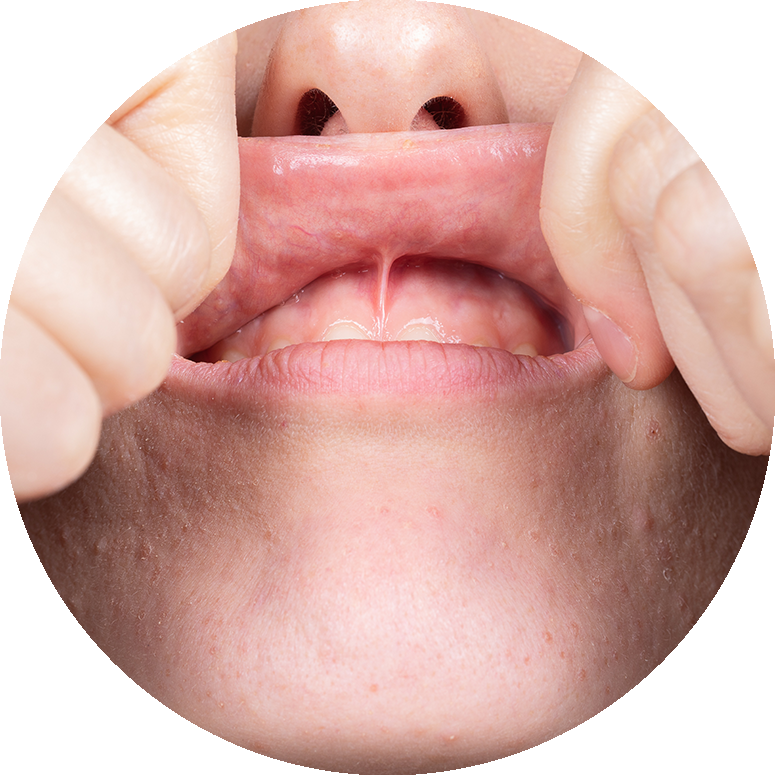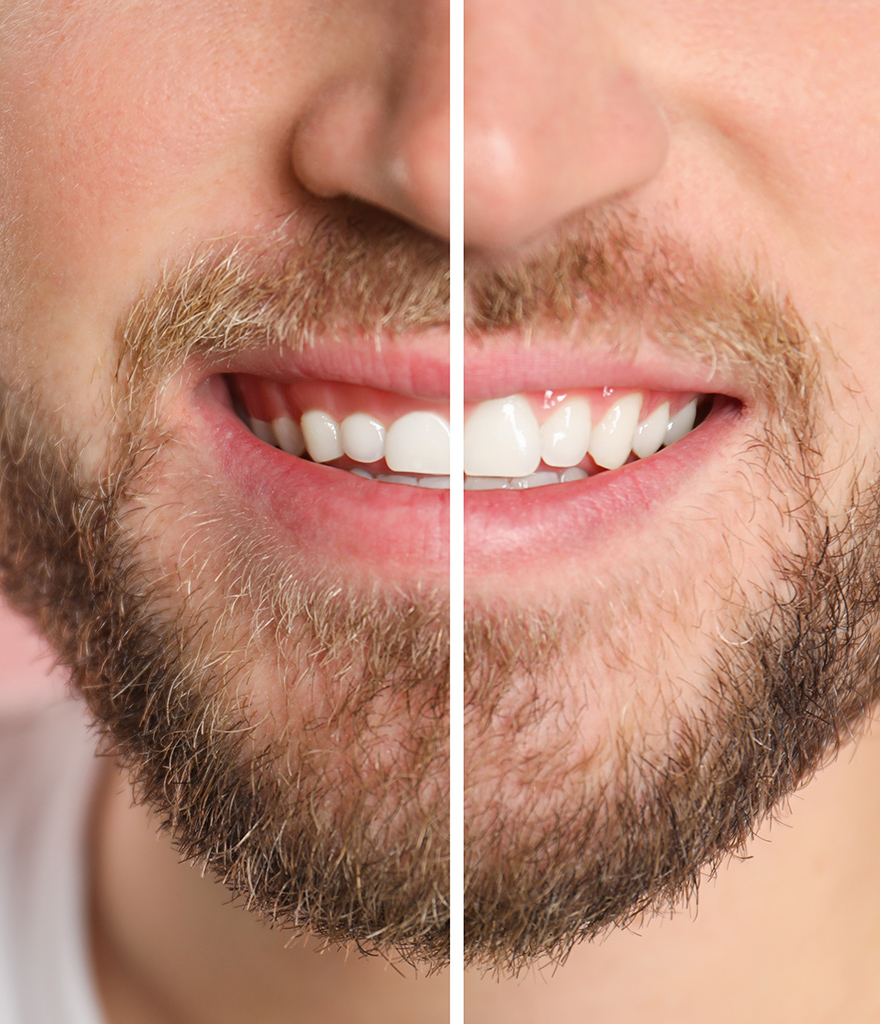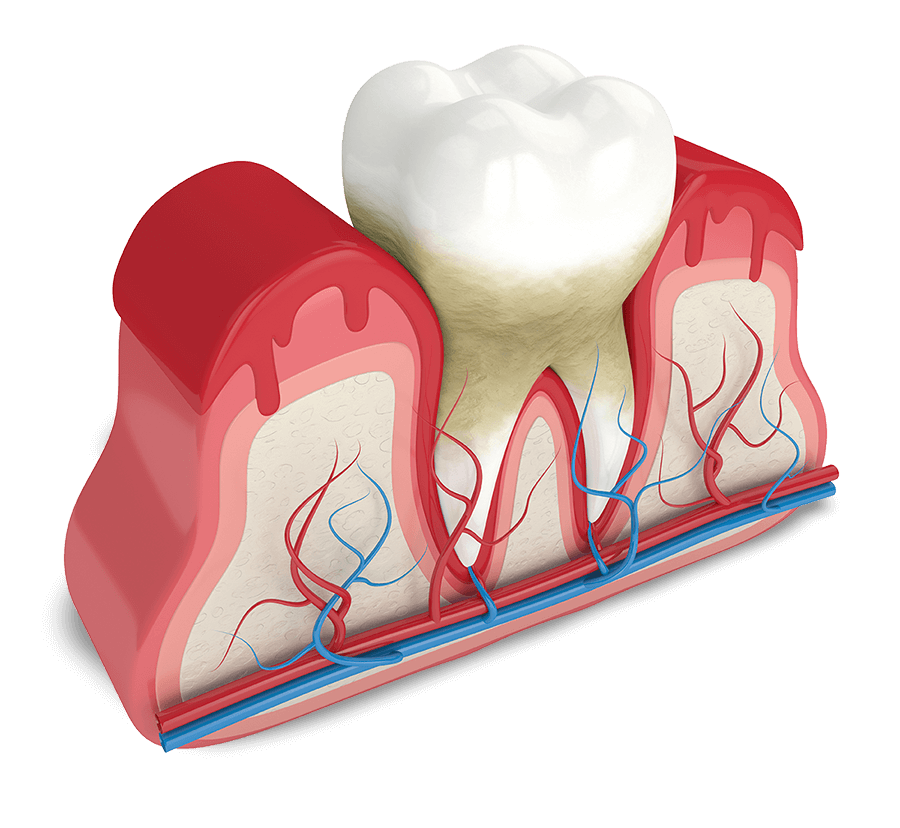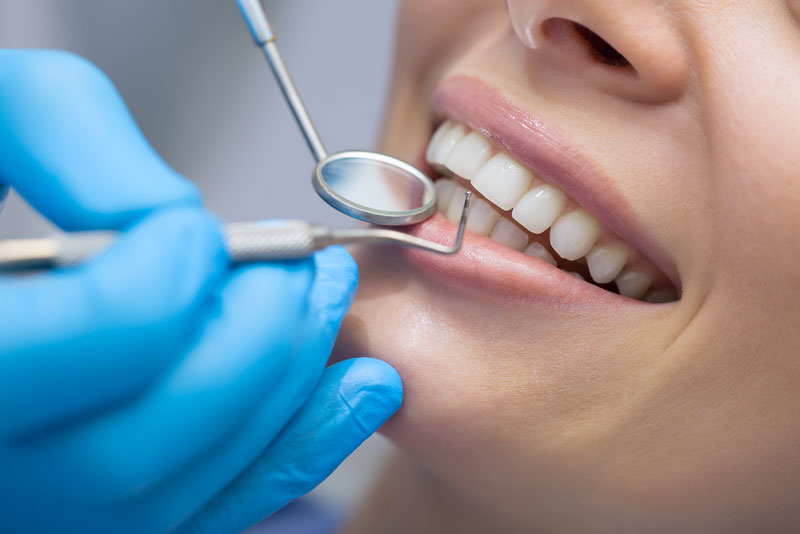

What is a Frenectomy?
A frenum is a naturally occurring muscle attachment, typically seen between the front teeth (either upper or lower). It connects the inner aspect of the lip with the gum. A lack of attached gingiva and a high (closer to the biting surface) frenum attachment, which exaggerates the pull on the gum margin, can result in recession. Additionally, an excessively large frenum can prevent the teeth from coming together resulting in a gap between the front teeth. If pulling is seen or the frenum is too large to allow the teeth to come together, the frenum is surgically released from the gum with a frenectomy. A frenectomy is simply the surgical removal of a frenum.

What is a Gingivectomy?
A gingivectomy is usually performed when a patient has severe periodontal or gum disease that has not responded well to scaling and root planing or other periodontal procedures and is a procedure that is typically provided by a doctor. It is important to your overall health to effectively treat and control gum disease. Gingivectomies are performed to remove and reshape loose, diseased gum tissue, and to reduce the depth of pockets between the teeth and gums.
This procedure can also be indicated when an overgrowth of gum tissue has occurred resulting from certain health conditions, anti-seizure or hypertensive medications, or rapid orthodontic movement.
Stages of Gum Disease
It has been estimated that 75% of Americans have some form of gum disease.
The three stages of gum disease are:
- Gingivitis
- Periodontitis
- Advanced Periodontitis


Before Our Gingivectomy Procedure
Before the procedure begins, your doctor will numb the area using a local anesthetic. Small incisions are then made and excess gum tissue is carefully removed. After all areas of diseased tissue have been removed, a putty-like substance is then placed over the gums. This substance is designed to protect your gums as they heal.
Following the Procedure
After the procedure, it is important to eat only soft foods and to drink only cool or slightly warm liquids while the putty is in place and your gums are healing. It is vital to keep the mouth clean after the procedure, especially if you have gum disease. While it is important not to brush in the area where the procedure was performed for a short time following your gingivectomy, it may be possible to brush and floss the rest of the mouth. After a few weeks, the gums will be completely healed and it will be possible to resume brushing and flossing when recommended to do so by your doctor, though this should be done gently at first.

Help Control Gum Disease by Reshaping Your Gums
Contact us today to schedule your consultation.
Smile & Gum Correction FAQs in Berkeley, CA
A frenectomy removes the frenum—a small fold of tissue between your lip and gums—that can pull on gum tissue or block front teeth from closing. When the frenum is too thick or high, it can cause spacing issues and gum recession. Releasing it surgically allows for better tooth alignment and improved gum health.
In Berkeley, CA, a gingivectomy is performed when gum disease causes swollen or overgrown tissue. The doctor numbs the area and carefully removes diseased gum tissue to reduce deep pockets where bacteria thrive. This helps prevent the progression of periodontal disease and makes future cleanings easier.
Both procedures are done with local anesthesia for comfort. A frenectomy involves cutting the frenum to release its tension. A gingivectomy includes removing overgrown or infected gum tissue with precise incisions. Afterward, your gums are covered with a protective dressing to aid healing.
Most patients recover from frenectomy or gingivectomy surgery within 1–2 weeks. During that time, you’ll need to eat soft foods, stay hydrated, and avoid brushing the treated area. Full healing usually happens in a few weeks, after which normal hygiene routines can resume.
This may be caused by a high or tight frenum attachment. If the tissue pulls on the gums during movement, it can cause recession and discomfort. A frenectomy reduces that pull, allowing the gum tissue to stabilize and heal.
Yes. A gingivectomy can remove gum overgrowth caused by certain medications, like anti-seizure or blood pressure drugs. Removing the excess tissue helps reduce infection risk and restores a healthier gum line.
Advanced gum disease often includes inflamed, loose, or overgrown gums and deep pockets between teeth and gums. A gingivectomy helps by removing these infected tissues, promoting healing and preserving teeth.
If you notice a gap between your teeth, gum recession, or signs of gum disease, it’s time to schedule a consultation in Berkeley, CA. Early treatment can correct structural issues and prevent long-term oral health damage.
Not usually. Local anesthesia ensures a comfortable experience. Some tenderness may follow, but it’s manageable with mild medication. Most patients return to normal activity within a few days.
If your dentist notices gum pulling, tissue overgrowth, or untreated gum disease, they may refer you for a frenectomy or gingivectomy. A quick evaluation can determine the best approach for your specific needs.

